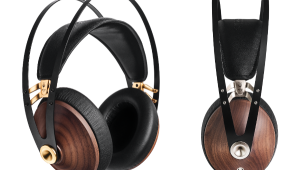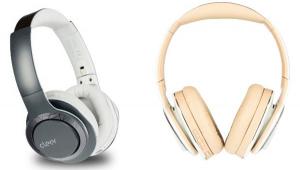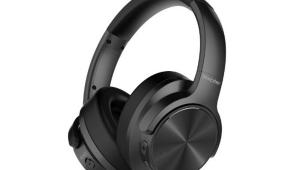Review: Yamaha Pro 500 headphone

From mixing boards to Blu-ray players to soundbars to saxophones, Yamaha makes just about everything audio. Which is why it’s surprising that in the one field that practically every audio company has piled into—headphones—Yamaha hasn’t done much in the last few years. The Pro 500 represents a re-entry of sorts, a flashy blue bombshell designed to attract both audiophiles and fashion-oriented “listeners.”
According to Yamaha president Tom Sumner, the Pro 500 was tuned to suit the tastes of a panel of American listeners. Sumner said the company wanted this model to be “as musically pure as possible,” thus no active noise cancelling (ANC), but he also said the Pro 500 is designed to maximize passive acoustical isolation.
So it’s an audiophile headphone, but the gleaming aluminum earpieces, Beats/Soul-like integrated headband and bold Yamaha logos on the sides practically guarantee you’ll attract a few looks on the subway—unless, of course, you opt for the more conservative black model.
The only unusual feature is 3.5mm input jacks on each of the earpieces, so you can plug the cord into either earpiece or even “daisy chain” by plugging your friend’s headphones into the Pro 500.
Adequately judging the Pro 500 would clearly demand panelists with extraordinary senses of style and sound. Sadly, L.A. voice actress Lauren Dragan may be the only person alive who fits that description. Unprecedentedly unstylish Tech^2 bloggers Geoff Morrison and I chimed in with our opinions about the sound.
Blue notes
I started my Pro 500 listening with a random choice, Led Zeppelin’s “The Song Remains the Same” (the studio recording, not the live album). My notes describe the sound as “kinda exciting and kick-ass, although there’s a big bump in the bass and the treble has a bit too much sizzle.”
Something told me that as good as the headphone amp in my iPod touch is (relative to most MP3 players, at least), the Pro 500 would benefit from something more serious. Connecting my Musical Fidelity V-Can headphone amp between the iPod and the Pro 500 proved my intuition correct. The treble sounded much smoother and the bass was tighter, although it still had what sounded like a rather boomy, high-Q resonance.
My listening notes then filled with lots of “WOW”s. On Toto’s “Rosanna,” while the booming bass obscured the voice a bit, I could really hear the reverb and the sparkle of the studio-slick production. It occurred to me that maybe that big bass made the treble detail possible; without so much bass, the tonal balance might sound pretty glaring.
More “WOW”s: I never heard such extraordinary detail in the female voice and calfskin banjo in the revivalist group Crow Quill Night Owls’ “Any Kinda Man,” even though the overpumped bottom end made the washtub bass sound more like something Jay-Z would favor. I never noticed the subtle, garbled voices in the quiet passages of Adrian Belew’s “May 1, 1990,” nor did I ever hear the full band explode out of the soft acoustic guitar strums the way it did with the Pro 500. It’s obvious that detail and dynamics were major priorities for the people who voiced this headphone.
And I never heard “Haru Haru” by K-pop superstars BigBang sound so big and banging. I felt as if I could almost pick out each voice in the group’s dense, perfectly harmonized (or more likely, perfectly Auto-Tuned) vocals. Here, the Pro 500’s big bass sounded great, giving “Haru Haru” the super-powerful bottom end it needs to balance out the thin, boyish voices.
My fellow panelists were a little less enthused. Geoff found the sound open and the treble detail and attack very good, but complained that the bass is a bit too boomy. (And he’s notorious around here for liking headphones that are too bassy for the rest of us.) He, too, tried the Pro 500 with his iPod touch and with the V-Can, and agreed that the improvement of adding the external amp was substantial in this case.
Lauren had a major fit problem: She had to slip a finger under the headband to get the earcups in the right position over her ears. For her, the Pro 500’s bass was just too bassy; she felt the tuning made the bottom end too hard-hitting and overpowering for her taste.
- Log in or register to post comments



































































